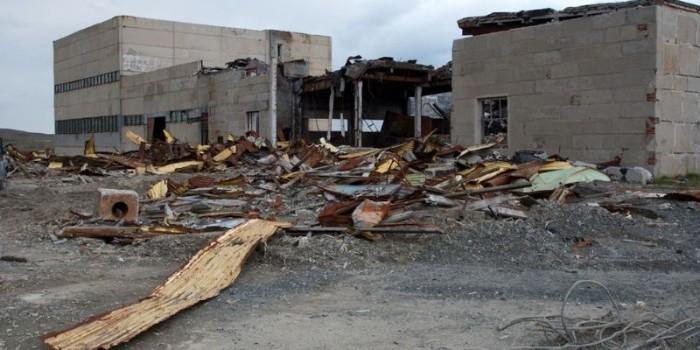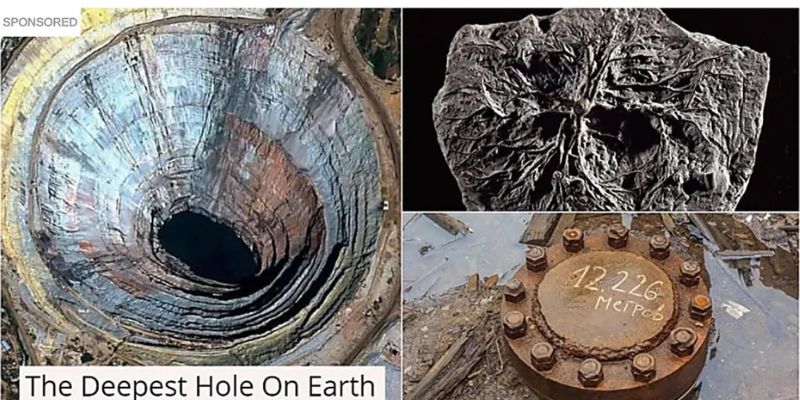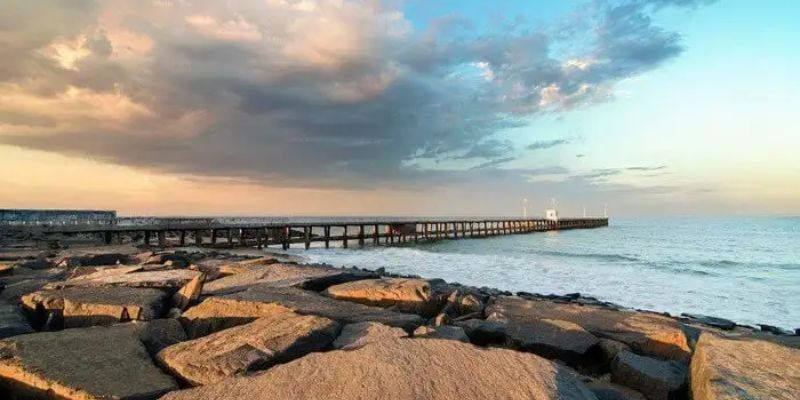For the first time in human history, a team of scientists reached depths never before explored by humans on Earth. After two years of hard work and determination, they sealed off the deepest hole ever made — a feat that marked an incredible milestone of achievement.
The newly-discovered chasm is believed to be around 2 billion years old and dives more than 7 miles beneath the surface of our planet.
It's an amazing discovery that could revolutionize our knowledge about what lies below us and shed light on some mysteries about how life evolved here on Earth.
So let’s delve deeper into this remarkable journey to uncover the secrets in this enigmatic abyss.
Unveiling the Mystery of the "Kola Superdeep Borehole" - The Deepest Hole On Earth
Amid the Kola Peninsula, a region in northwest Russia lies a remarkable geological formation: the Kola Superdeep Borehole. This hole is believed to be the deepest ever made by human hands and has recently been permanently sealed after an incredible two-billion-year-old discovery.
This borehole was a scientific endeavor initiated by the Soviets in 1970 to drill as deep as possible into the Earth’s surface. Scientists had expected to penetrate no more than 15km, but they reached an astonishing 12,262 meters (over 7.5 miles!).
At this depth, researchers made a startling discovery – pieces of ancient rocks that date back 2 billion years ago. Since its completion in 1989, the Kola Superdeep Borehole has provided invaluable insight into Earth's geological history.
By studying the ancient rocks and sediment layers found at this depth, scientists have discovered clues about past climatic conditions, tectonic plate movements, and evidence of microbial life.
Recently, researchers decided to permanently seal off the borehole to prevent it from becoming a tourist site and preserve the discoveries made. The Kola Superdeep Borehole remains an incredible accomplishment, marking a significant moment in scientific exploration.
Its secrets may reveal even more remarkable findings as technology continues to advance.
How Scientists Discovered What Lies Underneath the Kola Superdeep Borehole

In 1970, Soviet scientists began drilling a borehole in the Kola Peninsula of Russia. The project, known as the Kola Superdeep Borehole, was intended to explore deeper into the Earth than ever achieved before. After 19 years of drilling, the borehole reached a staggering 12,262 meters (40,230 feet), making it the deepest artificial hole on the planet.
This impressive feat revealed unprecedented information about what lies beneath our feet.
The scientists used advanced machinery to drill into the Earth's crust and observed rocks from different geological eras, some dating back two billion years.
As they continued drilling, temperatures as high as 180 degrees Celsius (356°F) and previously unknown microscopic life forms were encountered. The KSDB provided new insights into the age, composition, and structure of the Earth's mantle and core, but it was eventually closed in 2005 due to technical difficulties.
It is now permanently sealed, preventing further exploration beneath its depths. However, the two billion-year-old discoveries made at the KSDB will continue to give scientists invaluable insight into our planet's hidden history.
The Kola Superdeep Borehole project is a testament to the power of scientific exploration. It demonstrates the potential of human ingenuity and serves as a reminder that the mysteries of our world remain far from being solved. The discoveries made at this remarkable site will continue to shape our understanding of Earth's geology for decades.
Exploring the Unknown Lifeforms and Elements From 2 Billion Years Ago
The deepest hole on earth, located in Siberia, has been permanently sealed after an incredible 2 billion-year-old discovery. The well was dug by Russian scientists in 1970 and reached 12 kilometers deep into the Earth's crust. After decades of exploration, this scientific endeavor yielded a remarkable insight into our planet’s history.
Scientists uncovered evidence of ancient lifeforms and elements that were previously unknown to us. This included rare and mysterious bacteria that provide clues about the makeup of our planet's ancient atmosphere. Researchers also discovered a unique mineral composition of iron, magnesium, and calcium preserved in an almost pristine state for billions of years.
This groundbreaking discovery has provided scientists with invaluable knowledge about Earth.’s history and evolution. It has also opened the door to new questions about our planet’s future. By continuing to explore and understand the material in this deep hole, we may uncover more clues about how human activity impacts our planet today—and what changes can be made to prevent further damage.
Analyzing the Environmental Impact of Sealing Off this Ancient Landmark

This 2 billion-year-old discovery has been sealed off from the public, but what environmental effects will this have? The Kola Superdeep Borehole is located in Russia's Murmansk region and was excavated by Soviet scientists starting in 1970. It eventually reached a depth of 12.2 kilometers (7.6 miles) before being closed off in 2008.
Since the Kola Superdeep Borehole was sealed, there has been speculation about what environmental impacts this closure could have on the area. Scientists believe a large hole in the Earth's surface could affect groundwater flow and create seismic instability. The geological structure of the borehole has also been altered since it was closed off, as new rock formations have formed in the cavity.
The Kola Superdeep Borehole was a valuable scientific resource, providing researchers with insights into the geological makeup of the Earth’s deep interior. While closing off access to this ancient landmark may have been necessary for public safety, it is still an important loss to our collective understanding of the planet's history and evolution.
Scientists are now seeking other ways to study the Earth’s deep interior and uncover discoveries.
FAQs
What is the deepest hole ever discovered?
The Kola Superdeep Borehole, located on Russia's Kola Peninsula, is the deepest hole ever found. Between 1970 and 1994, Soviet scientists drilled it down to a depth of 7.5 miles (12,262 meters). As a result, it surpasses the Mariana Trench's deepest point, which has a maximum depth of 6.8 miles (10,911 meters), to become the deepest manmade point on Earth.
What is a 2 billion-year-old fossil found?
1989 Russian scientists at the Kola Superdeep Borehole discovered a 2 billion-year-old fossil. This is the oldest fossil on Earth, discovered deep within the borehole. The find was so remarkable that it garnered international press attention as the researchers revealed it belonged to a new species of single-celled organisms.
How long did it take to drill the deepest hole into the earth?
The Kola Superdeep Borehole took 24 years, from 1970 to 1994. During this time, Russian geologists drilled 12 shafts and reached a depth of 7.5 miles (12,262 meters). This process involved drilling through several different geological strata and required specialized equipment to reach extreme depths, including diamond-tipped core drills and hydraulic oil pumps.
Conclusion
So, there we have it - all the evidence and findings surfacing from the Kola Superdeep Borehole. After many years of exploration, innovation, and amazement, the deep borehole has been sealed with a cap. Nobody will ever venture into its depths again, but what scientists uncovered provides invaluable insight into the complex lifeforms and elements of two billion years ago. We can now use these discoveries to make more informed decisions about our environment - from pollution levels and climate change to energy conservation and sustainable growth.
The Kola Superdeep Borehole is an example that shows us how far science has come in understanding our planet's intricate mechanisms. And while we can no longer appreciate it physically, we can continue to take inspiration from its progress and move forward on our paths of discovery. After 2 billion years of discovery, the deepest hole on Earth has been permanently sealed.




